Currently, Google Chrome is the most popular desktop browser in the world. Although it has a user-friendly interface, you may still encounter some problems while using it, like the ERR_BAD_SSL_CLIENT_AUTH_CERT error message.
Fortunately, fixing the ERR_BAD_SSL_CLIENT_AUTH_CERT error doesn’t require much technical experience. You may simply need to update Chrome, clear your cache, or delete conflicting browser extensions.
In this post, we’ll take a closer look at the ERR_BAD_SSL_CLIENT_AUTH_CERT error and what causes it. Then, we’ll show you seven easy ways to fix it. Let’s get started!
Check Out Our Video Guide On Fixing The ERR_BAD_SSL_CLIENT_AUTH_CERT Error:
What Is the ERR_BAD_SSL_CLIENT_AUTH_CERT Error?
While trying to access a website in Chrome, you might get an ERR_BAD_SSL_CLIENT_AUTH_CERT error message. This will prevent you from accessing the page.
To understand this Chrome error, you’ll need to know how SSL works. Secure Sockets Layer (SSL) is a security protocol that encrypts and authenticates any data sent from a web server to your browser.
As a website owner, it’s important to secure your site with an SSL certificate. This will help you protect the content on your website, including sensitive data. There’s also the Transport Layer Security (TLS) protocol, which is an updated version of SSL that further authenticates your server.
When you try to access a website, Google Chrome will check for security protocols like an installed SSL certificate. If your browser cannot provide a secure connection, it will return an ERR_BAD_SSL_CLIENT_AUTH_CERT error.
What Causes the ERR_BAD_SSL_CLIENT_AUTH_CERT Error?
If a website has an invalid SSL certificate, you’ll likely receive an ERR_BAD_SSL_CLIENT_AUTH_CERT error. Since SSL certificates are important for safe browsing, Chrome may reject unsecured sites.
However, there are other reasons you might see this error message:
- Corrupt browser cache
- Unsynchronized time and date on a device
- Third-party software blocking the website
- Third-party SSL/TLS protocol filtering
- Outdated device or Chrome version
As you can see, different factors can trigger the ERR_BAD_SSL_CLIENT_AUTH_CERT error. While this may seem overwhelming, you can easily identify the root cause and implement an effective solution.
How To Fix the ERR_BAD_SSL_CLIENT_AUTH_CERT Error (7 Methods)
Like most Chrome issues, the ERR_BAD_SSL_CLIENT_AUTH_CERT error can prevent you from accessing a website. Let’s look at some easy ways to troubleshoot and fix this error.
1. Update Google Chrome
As we mentioned earlier, an outdated web browser can lead to an ERR_BAD_SSL_CLIENT_AUTH_CERT error message. Chrome constantly updates its software to resolve security issues and fix bugs. If you’re using an older version, it may produce more browsing errors.
To make sure your browser is updated, select the three-dot icon in the upper right corner. Then, click on Help > About Google Chrome:
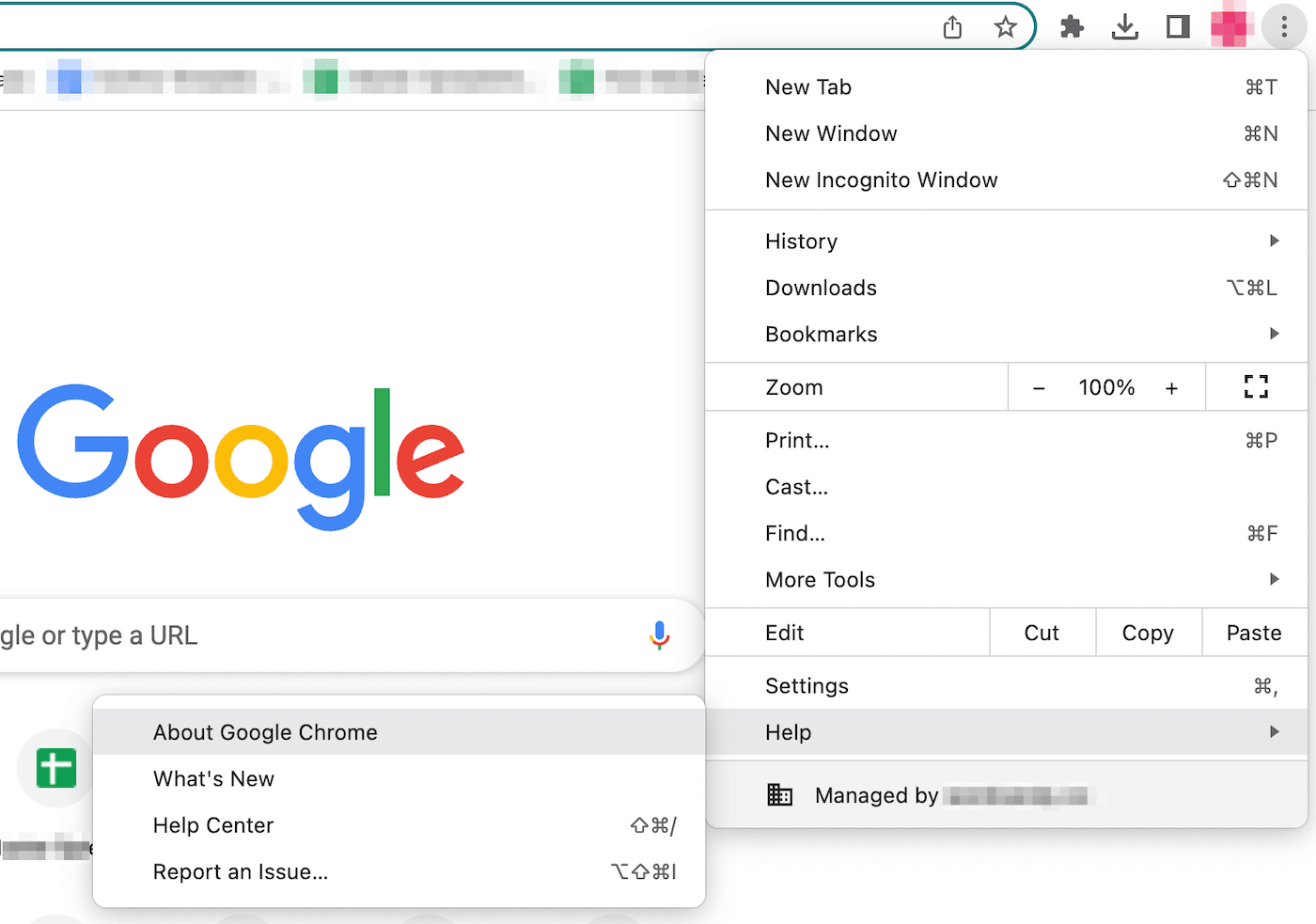
Chrome will then check for new updates. If there is one available, it will automatically install it:
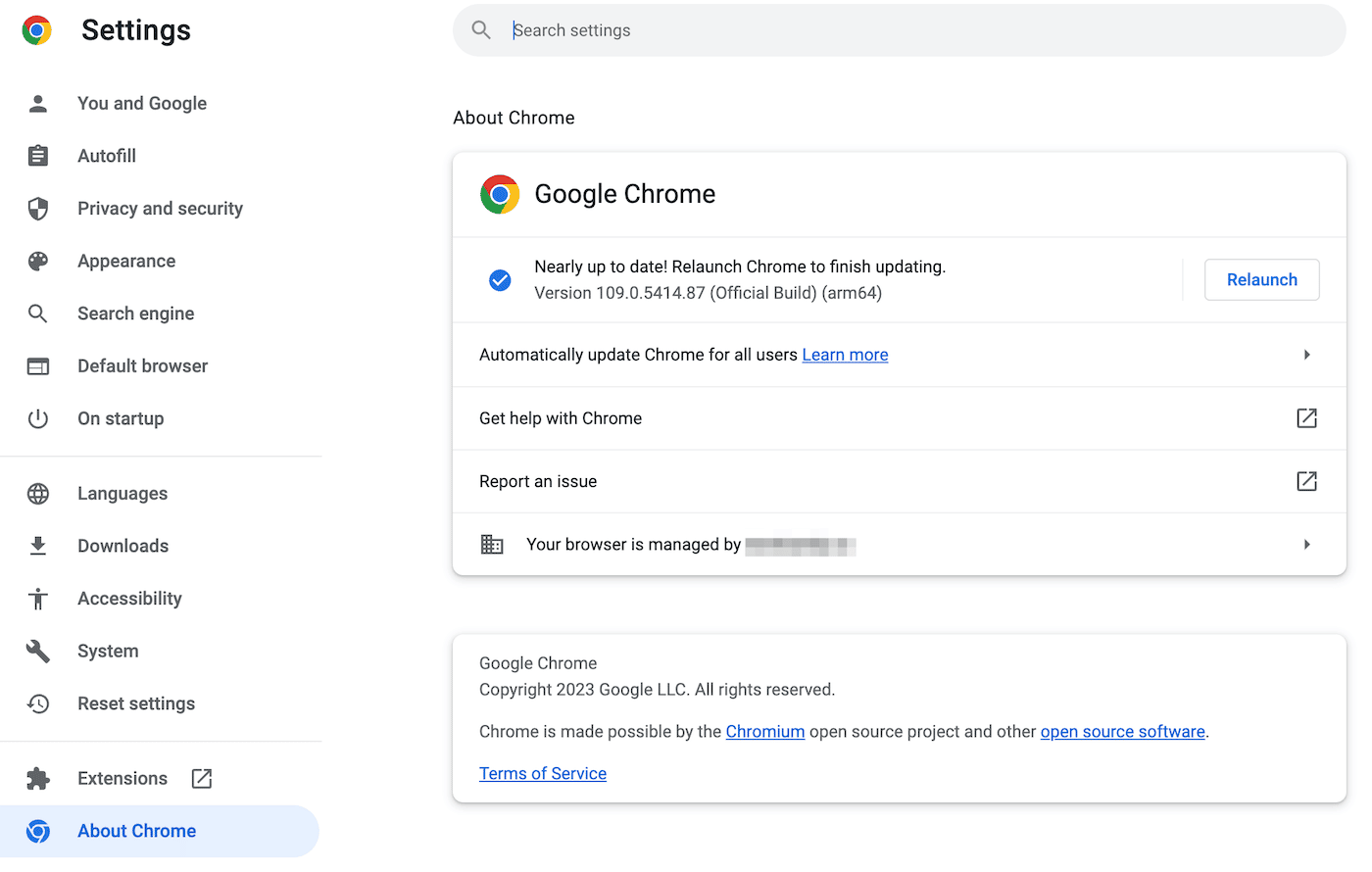
Once the update is finished, you’ll need to restart Google Chrome. To do this, hit the Relaunch button.
When the browser reopens, try visiting the website you were trying to access. If the ERR_BAD_SSL_CLIENT_AUTH_CERT message is still visible, you can move on to the next method.
2. Sync Your Device’s Date and Time
Sometimes, your device won’t display the correct date or time. If these two settings are out of sync, it could create conflicts with your browser.
For example, a website’s SSL certificate may have just been renewed, but if the date on your computer is wrong, the browser might recognize it as invalid. This can easily trigger an ERR_BAD_SSL_CLIENT_AUTH_CERT error.
To fix this, open your Windows Settings app. Then, navigate to Time & language and select Date & time:
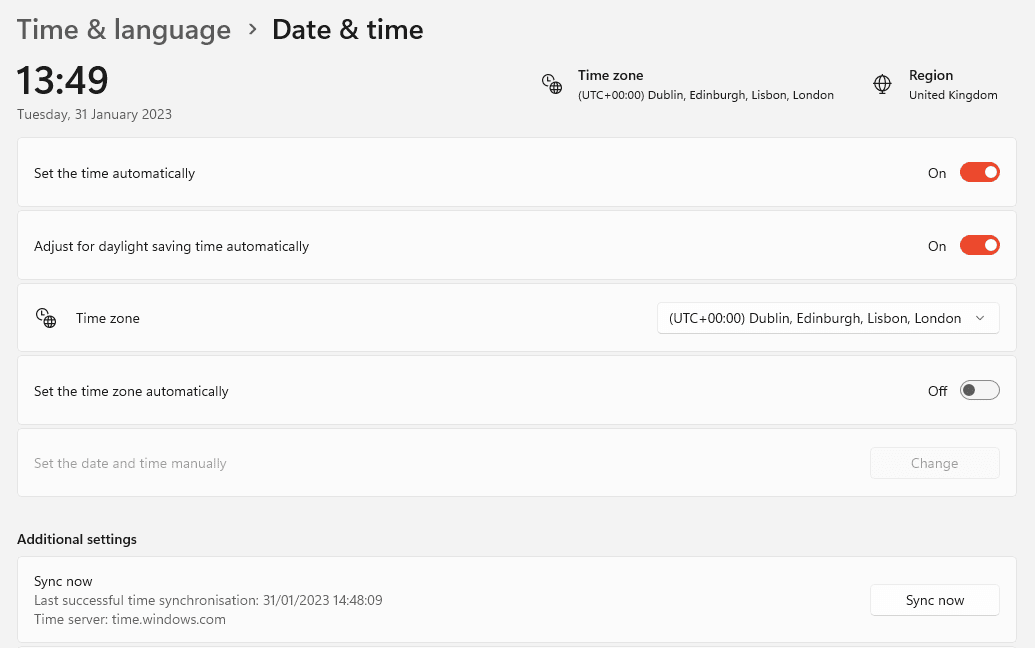
Make sure to enable automatic configuration for both the time and time zone. Under Additional settings, click on the Sync now button. This will help ensure that your device displays the same date and time as Microsoft servers.
Although this is commonly a Windows issue, you can also check the date and time on a Mac. In your System Preferences, select Date & Time:
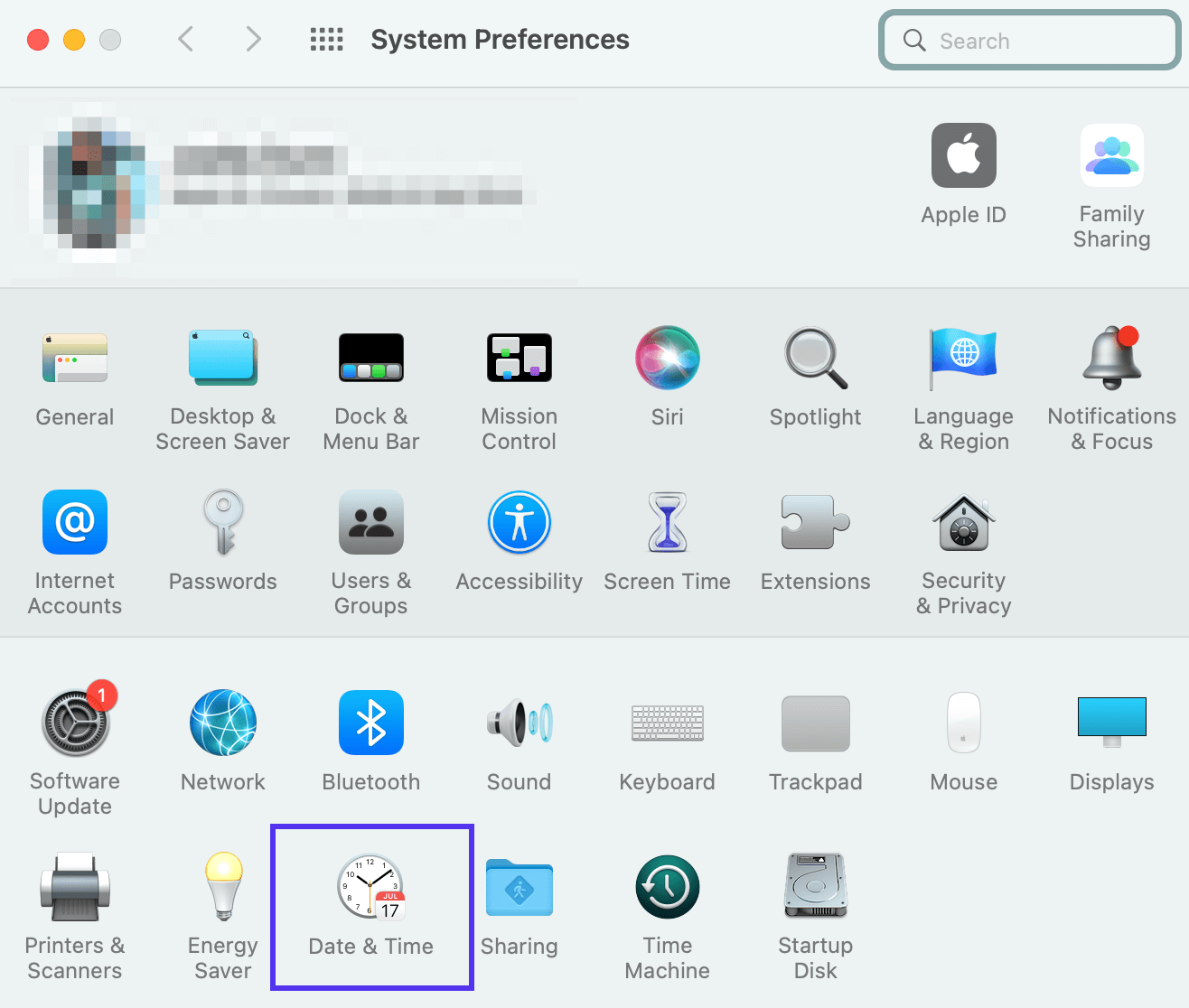
By default, the date and time will be set automatically. If this information is incorrect, deselect the Set date and time automatically setting. Then, you can set the date and time manually:

When you’re ready, save your changes. Then, check to see if the browser error has been resolved.
3. Clear Your Browser Cache and Cookies
If none of the previous methods resolved the ERR_BAD_SSL_CLIENT_AUTH_CERT error, the issue may be with your cached data. When you visit a website for the first time, your browser will save data in a cache. This reduces the number of HTTP requests when you revisit the site so that the page can load faster.
Unfortunately, your browser cache could become corrupted or outdated. This can cause many Chrome errors, so you may need to clear it.
To clear your browser cache, go to More Tools > Clear Browsing Data:

In the pop-up window, select Cached images and files. Feel free to also clear the browsing history, cookies, and other site data:
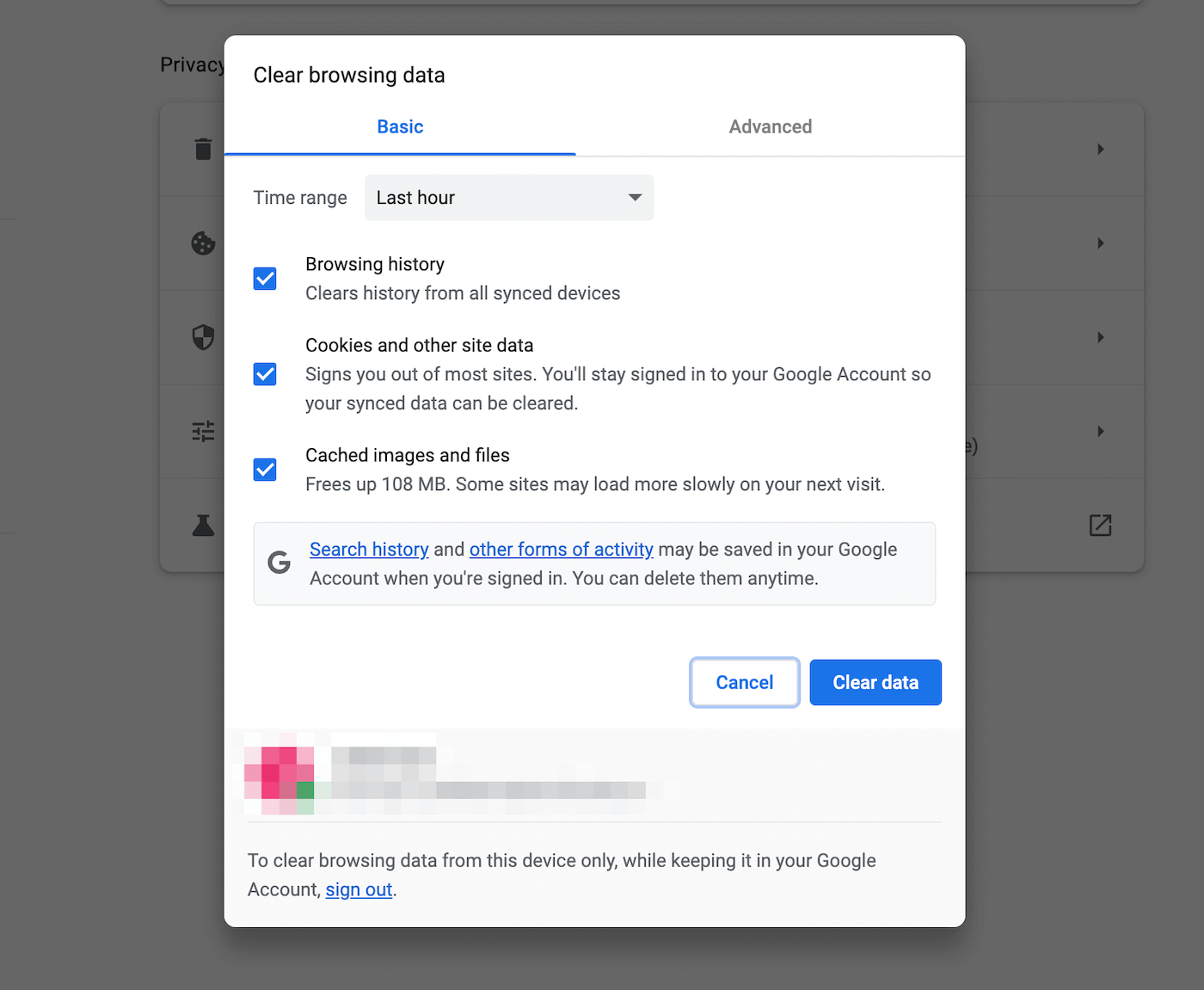
When you’re finished, click on Clear data. Then, refresh the page to see if it loads.
4. Delete Conflicting Browser Extensions
If you’re using browser extensions, these may negatively impact your browsing experience. If the software is old or out-of-date, it could cause the ERR_BAD_SSL_CLIENT_AUTH_CERT error.
To troubleshoot this issue, go to More Tools > Extensions in Chrome:
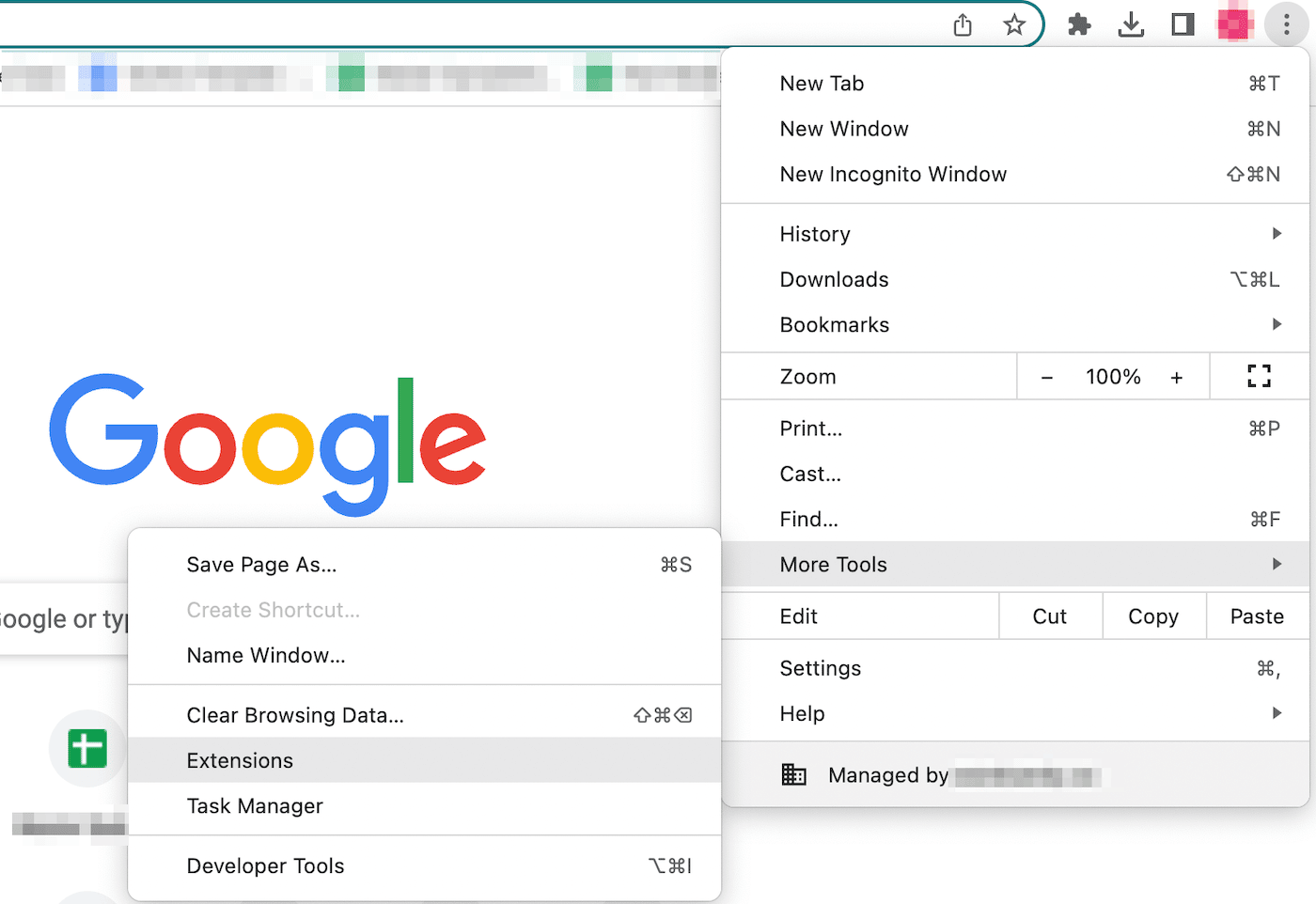
This will display a list of all your installed Chrome extensions. Use the toggle buttons to turn off every tool:
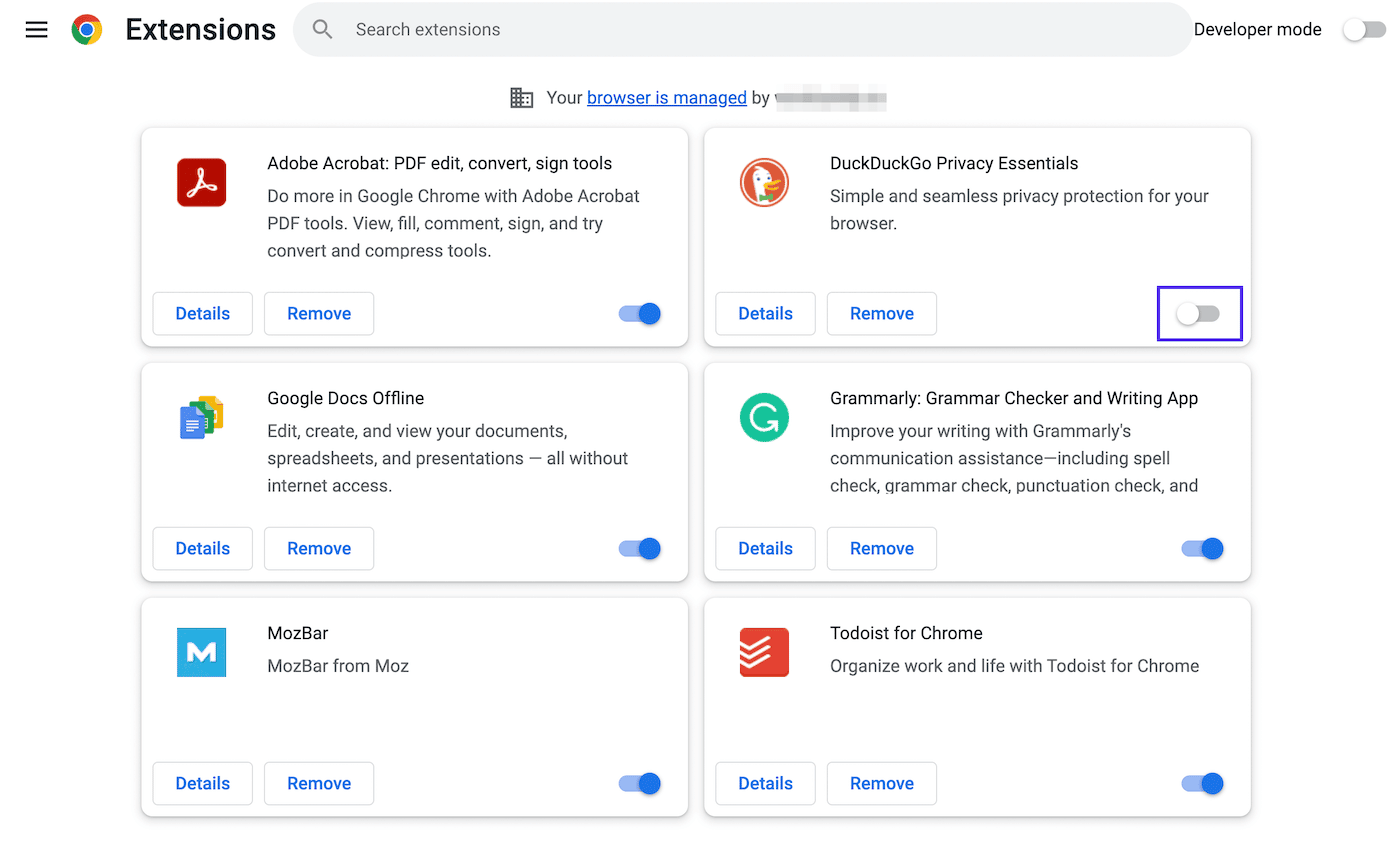
Now that all your extensions have been disabled, try to access the website that displayed the ERR_BAD_SSL_CLIENT_AUTH_CERT message. If it loads, then one of your extensions was triggering the error.
To identify the culprit, go back to your Extensions page and reactivate each extension one at a time. After each reactivation, check to see if the error reappears. Once it does, you can remove that specific extension.
5. Update Your Device
Another simple solution is to update your operating system. Outdated Windows versions have been known to trigger the ERR_BAD_SSL_CLIENT_AUTH_CERT error.
Start by navigating to your Windows Settings. Then, select Windows Update. Here, you can check for new updates and install them if available:

To update a Mac computer, open your System Preferences. Then, find the Software Update option:

If there is a new update, you can hit Upgrade Now. To prevent any future issues, consider checking the box next to Automatically keep my Mac up to date:
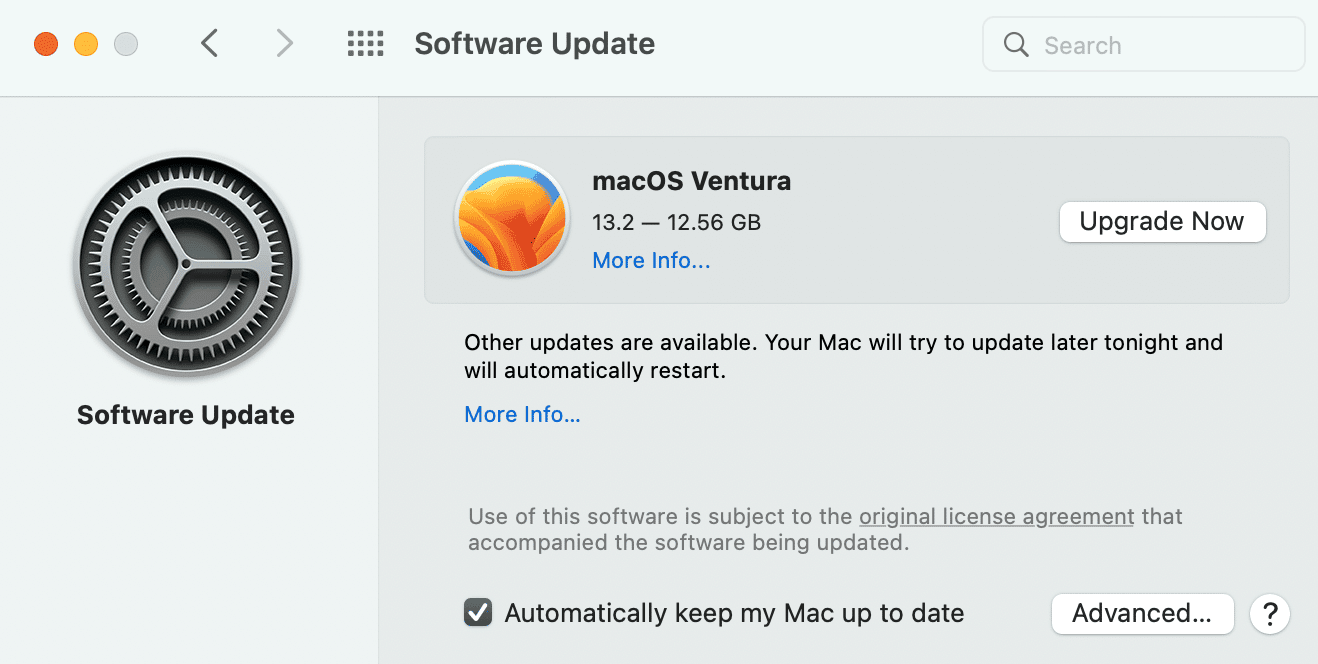
Once you update your computer, open Chrome and revisit the website that caused the error. If you don’t see the error message, you can continue browsing normally!
6. Disable QUIC Protocol
QUIC (Quick UDP Internet Connection) is an experimental protocol that was created to improve HTTP traffic. Similar to TLS and SSL, it aims to create secure connections with reduced latency.
Although Chrome uses QUIC protocol, it is still an experimental setting. As a result, it could cause loading errors.
If you haven’t found a solution to the ERR_BAD_SSL_CLIENT_AUTH_CERT error, try disabling the QUIC protocol. First, search for “chrome://flags/#enable-quic” in your browser:
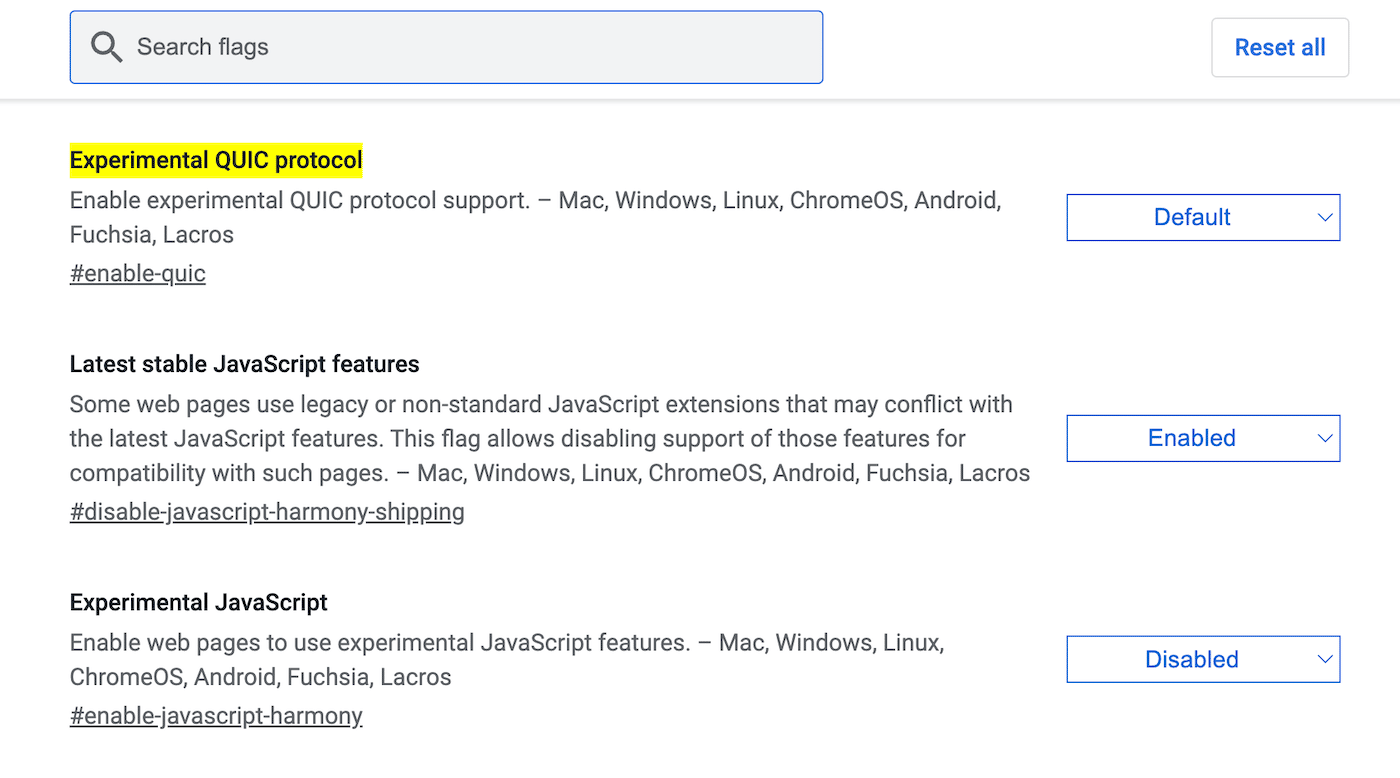
Using the dropdown menu on the right, disable the Experimental QUIC protocol setting:

Once you implement this change, you’ll need to relaunch Chrome.
7. Temporarily Turn Off Anti-Virus Software
You may have third-party applications that perform SSL/TLS protocol filtering. For example, anti-virus software and firewalls will often scan websites for SSL certificates. Although this can boost your security, it can also cause the ERR_BAD_SSL_CLIENT_AUTH_CERT error.
Programs like Nod32, Avira, and McAfee commonly identify false positives when scanning websites. Although every software is different, you should be able to disable settings related to SSL/TLS protocol.
Alternatively, you can temporarily disable the entire anti-virus software. You may also need to turn off firewalls, Virtual Private Networks (VPNs), and any other security software on your device.
Just like with your browser extensions, check to see if the error disappears after you deactivate each program. This can help you target the source of the issue.
Summary
An ERR_BAD_SSL_CLIENT_AUTH_CERT error crops up when Chrome is unable to verify a website’s SSL certificate. As a result, Chrome will block the target resource to protect the user. However, some factors, like outdated software, may cause the browser to falsely identify an SSL certificate as invalid.
To resolve the issue, you may need to update your device, reset the date and time, and clear the browser cache. You might also want to try disabling the QUIC protocol, your browser extensions, and any anti-virus software on your device.
As a website owner, you’ll want online visitors to safely access your content. With any Kinsta hosting plan, you’ll receive a free SSL certificate. Plus, we provide 24/7 customer support so you can talk with an expert about any technical issues!


